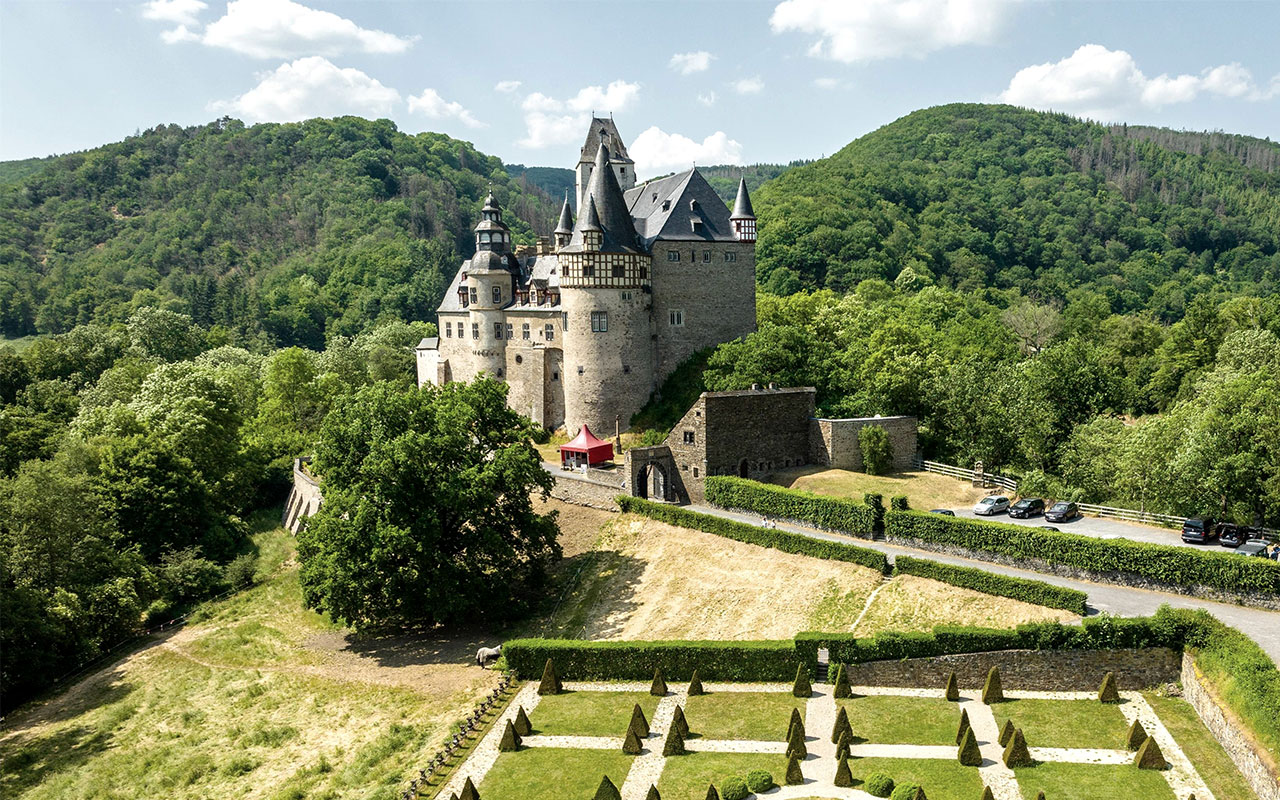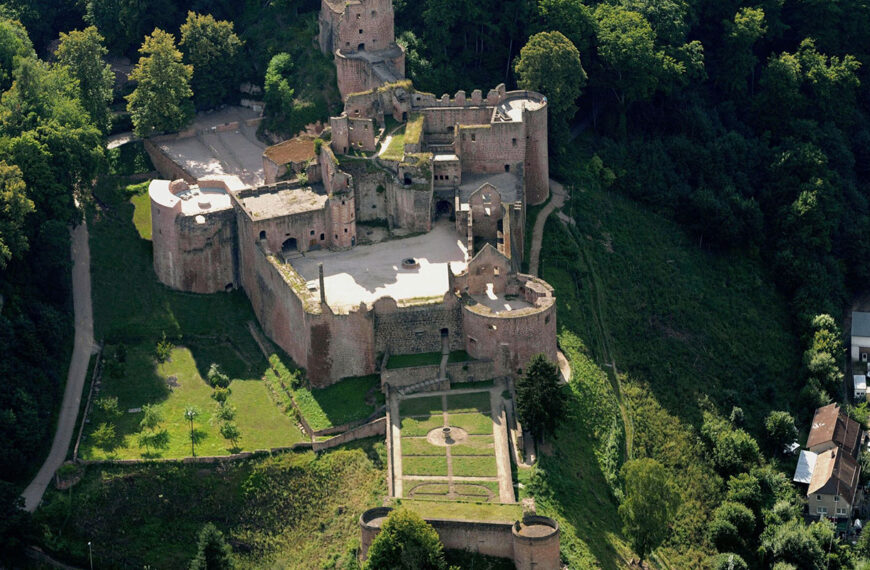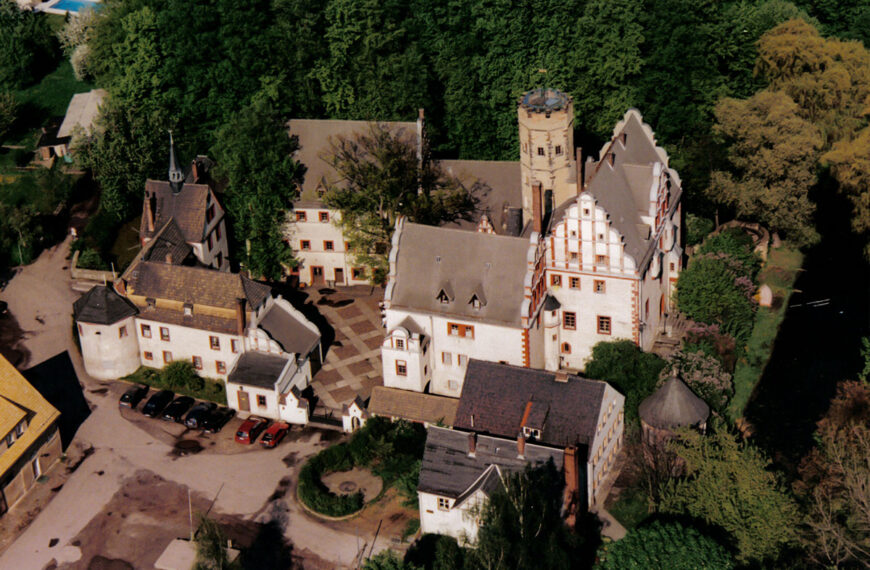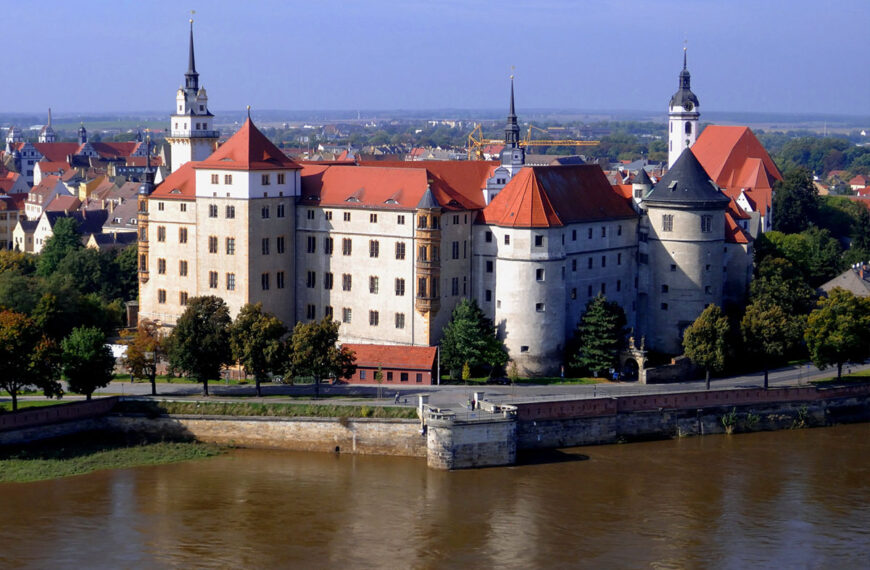Fortress architecture decorates palaces

A residential castle equipped with fortification elements to protect against attackers or as architectonic decorative element.
Example cover picture: Bürresheim Castle (DE)
During the time of the renaissance, European princes overtrumped each other with the construction of stunning castles and glorious palaces. Simultaneously, a risk of downfall arose from the many wars. In this way, a special combination of palace architecture with fortification elements evolved at many places.
Richly ornamented facades, wonderful parks and generous gardens were surrounded with canons equipped bastions, mighty walls and with crenels loaded entrance gates. Also referred to as ‘Palazze en Fortezza‘ in Italian, they combine military power and feudal splendor without merging both.
Splendid examples in Germany are the palaces Hartenfels in Torgau, Sonnenstein in Pirna or Palace Eichstätt (Willibaldsburg). Equally attractive examples are the fortified palaces in Saumur (France), Pardubice (Czech Republic), Fürstenstein in Książ (Poland), Helsingor (Denmark), Örebro (Sweden) and Pidhirci (Ukraine). But also the palaces in Jülich (Germany) and Krzyztopor (Poland) are embedded in mighty citadel architectures.
n the 19th century, the demand for protection was no longer the reason for the fortification of palaces. Some castle owners added fortification elements as architectural decoration and as special charm of contrast. It became fashionable to let a palace look ‘old’ and ‘well-fortified’ as a sign of pretended rich history and sentimental return. These architectural hybrids convey excitement and a new view of history.
Discover fortified locks with FORTE CULTURA
If you see this after your page is loaded completely, leafletJS files are missing.





